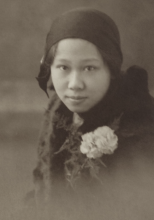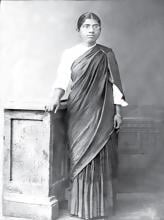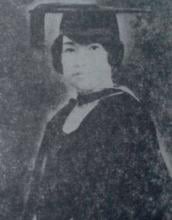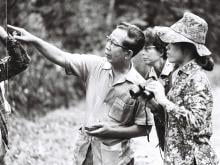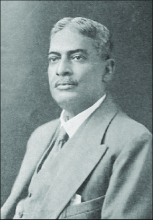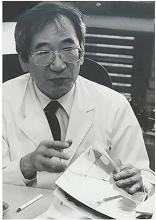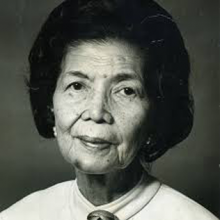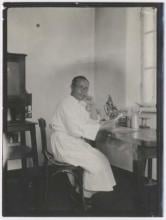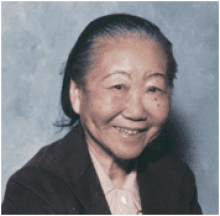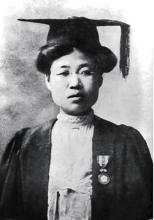Medicine
News

04 Nov 2007
Summaries of newsworthy papers include In vivo folding lights up, RNA interference insecticides, Genetic variants associated with rheumatoid arthritis and Genes for Transplants

02 Nov 2007
Immunologists reveal the switch between two components in the signal pathways for two types of immune response

31 Oct 2007
Summaries of newsworthy papers include Fires affect carbon balance in boreal forest, Breaking the silence, Stars spiral into life, Dance for your supper, Time taken to first base, The workhorse picks up speed and Caribbean reefs struggling to recover from ecological sucker punches

31 Oct 2007
Nondrug rewards could be a viable alternative to addictive drugs according to a study published in Neuropsychopharmacology. This finding could have important implications for those seeking treatment for drug addiction.

31 Oct 2007
Treating wheat seeds with lasers can help them grow into plants that are resistant to ultraviolet radiation and drought.

28 Oct 2007
Summaries of newsworthy papers include Long live transplants!, Phosphorylation on demand and Responding to sepsis

25 Oct 2007
Specialized immune cells orchestrate proper elimination of dead cells to prevent inflammation

25 Oct 2007
Researchers from Japan have shown that zinc can be used by the cell to transduce extracellular signals into cellular responses by propagating intracellular signaling pathways.

24 Oct 2007
Summaries of newsworthy papers include Moonlets create waves around Saturn, Neuroscience: The future’s bright, Cancer: Host of new genes spotted, Explosive spectrometry, Developmental biology: The eyes have it, Physics: See how they run, Auxin’s roots, Nuclear physics: Extending the drip line and Lévy flights called into question

24 Oct 2007
Women with high blood pressure during pregnancy should be monitored closely both during and after birth. Women in this group have an increased chance of developing cardiovascular problems and stroke later in life and the risks are under-recognized.

24 Oct 2007
Tiny polymer tubules can be assembled into ultra-absorbent sponges that have useful electrical properties. Highlights from Nature China include Insulin sensitivity, incorporating sulphur into the DNA backbone, Rice regulating small interfering RNAs, insoluble organic molecules arranged into thin films and giant dendrimers

21 Oct 2007
Summaries of newsworthy papers include Genetic variants in autoimmunity, Genetic variation in hair, eye, and skin pigmentation and Sex chromosomes influence behaviour

19 Oct 2007
Researchers reveal a new step in the regulation of allergic mediators

19 Oct 2007
Japanese researchers find compound disrupts mRNA quality control

17 Oct 2007
Summaries of newsworthy papers include Life’s a beach, Genes tell our evolutionary tale, The shadowy genome, Biggest black hole has even bigger companion, Rise and shine, Gene essential to sperm production identified, Old trick, new dog, A sunny outlook for nanowires and Sex determination linked to fitness

17 Oct 2007
Superheated water under high pressure can be used to break down dead animal waste into useful amino acids

14 Oct 2007
Other papers include The brain and feeding, I can see clearly now, Count down, and up, Negative light brings positive aspects to semiconductors, Using biomarkers to predict Alzheimer’s disease, Genetic risk factor for colorectal cancer and Cost-effective individual genome sequencing

12 Oct 2007
Hiroyuki Kamiguchi and team members aim to elucidate the mechanism of how the neuronal processes find their way, and to develop techniques to regenerate neuronal networks that have been injured owing to brain or spinal cord damage.

10 Oct 2007
Summaries of newsworthy papers include Climate change: Getting steamy, Genomics: Evolution in the lab, Planetary science: Tiger stripes, jets and Enceladus and Materials: Ferrotoroidic ordering found

10 Oct 2007
Prof. Albert Osterhaus a world renowned scientist/researcher in avian influenza will be one of the keynote speakers at the upcoming Bangkok International Conference on Avian Influenza 2008 (23-25 January 2008) and will present on “Development of pandemic influenza vaccines”.

10 Oct 2007
The avian flu virus H5N1 infects the respiratory tract and spreads to other organs in the human body. Other highlights from Nature China include Endometrial cancer, Turn pollution into power, Colon cancer and heart disease, Climate change and dust storms and Helical nanofibres

07 Oct 2007
Summaries of other newsworthy papers include Materials: Domains of influence and Fighting off an immune attack

05 Oct 2007
The collaboration is aimed to contribute to "Human, Society, and Globe", and promotes joint research projects mainly in the fields of Medical, Life Science, Economic and Area Studies

05 Oct 2007
A new route to synthesize an antibiotic may also lead to new drugs

04 Oct 2007
Annette Thomas, currently Managing Director of the Nature Publishing Group (NPG), has been appointed CEO of Macmillan Ltd with immediate effect, following the departure of Richard Charkin.

03 Oct 2007
Summaries of newsworthy papers include Anaesthesia without paralysis, Cancer: Stem cells and metastasis, High-temperature superconductivity: An organic perspective, Physics: A single artificial-atom laser and Supercurrents in a Bose-Einstein condensate

03 Oct 2007
Scientists in China identify its powerful antioxidant properties. Other research highlights include fish-oil supplements for healthy hearts, incubation of turtle eggs, a new class of bisimides for transistors, non-viral gene carrier for p53 and fabricated metal-organic microtubes.

30 Sep 2007
Neanderthals could have spread as far east as central Asia and Siberia. Summaries of newsworthy papers include NO end to protein modification, Micro-managing HIV replication, The long and the short of fatty liver, The gene-mapper’s best friend, Learning in stressful times, HIV stuns immune cells and Mitochondrial downfall in Parkinson’s disease

28 Sep 2007
Keio University receives approval from MEXT for its merger with Kyoritsu University of Pharmacy and establishment of the Faculty of Pharmacy and Graduate School of Pharmaceutical Sciences

28 Sep 2007
Japanese neuroscientists from the RIKEN Brain Science Institute have uncovered a mechanism for an epileptic disorder which occurs in infants. “We hope to develop effective therapies for this intractable epilepsy from further work,” says project leader Kazuhiro Yamakawa.
Researchers
Sorry, no researchers coming up for this topic.
- « first
- ‹ previous
- 1
- 2
- 3
- 4
Giants in history
Michiaki Takahashi (17 February 1928 – 16 December 2013) was a Japanese virologist who developed the first chickenpox vaccine.
Irene Ayako Uchida’s (8 April 1917 – 30 July 2013) strides to understand genetic diseases such as Down syndrome paved the way for early screening of chromosomal abnormalities in foetuses.
Baron Kitasato Shibasaburo (29 January 1856 – 13 June 1931) was a Japanese physician and bacteriologist whose work led to a new understanding of preventing and treating tetanus, diphtheria and anthrax.
Maggie Lim (5 January 1913 – November 1995) was a Singaporean physician who promoted family planning and expanded the access to clinics to improve the quality of life for mothers and children in Singapore’s early days.
By isolating soil microorganisms and studying the compounds they produce, Satoshi Omura (born 1935) discovered almost 500 organic compounds with unique properties that were produced by these microorganisms, including many new antibiotics.
The founder of the Adyar Cancer Institute in India, Muthulakshmi Reddy (30 July 1886 – 22 July 1968), fought to uplift women and girls from impoverished situations.
Chinese-American virologist and molecular biologist Flossie Wong-Staal (27 August 1946 – 8 July 2020) was the first scientist to clone HIV and determine the function of its genes.
Maharani Chakravorty (1937 – 2015) was one of India’s earliest molecular biologists whose research paved the way for advances in the treatment of bacterial and viral infections.
Archana Sharma (16 February 1932 - 14 January 2008) conducted research into plant and human genetics that expanded the understanding of both botany and human health. In relation to botany, she uncovered the means by which asexually-reproducing plants evolve into new species.
The first Thai woman to receive a degree in medicine, Margaret Lin Xavier (29 May 1898 – 6 December 1932), is best remembered for her compassion towards her less privileged patients.
In 1915, pathologist Katsusaburo Yamagiwa and his research assistant Koichi Ichikawa became the first to prove that chronic exposure to chemicals can cause cancer.
In 1915, Koichi Ichikawa along with pathologist Katsusaburo Yamagiwa became the first to prove that chronic exposure to chemicals can cause cancer.
Husband and wife team, Kimishige (3 December 1925 – 6 July 2018) and Teruko Ishizaka (28 September 1926 – 4 June 2019) discovered the antibody class Immunoglobulin E (IgE) that triggers allergic reactions. They also discovered that IgE antibodies attach to white blood cells, known as mast cells, releasing histamine, which causes allergic reactions.
Husband and wife team, Kimishige (3 December 1925 – 6 July 2018) and Teruko Ishizaka (28 September 1926 – 4 June 2019) discovered the antibody class Immunoglobulin E (IgE) that triggers allergic reactions. They also discovered that IgE antibodies attach to white blood cells, known as mast cells, releasing histamine, which causes allergic reactions.
Japanese chemist Takamine Jokichi (3 November 1854 – 22 July 1922) founded the Tokyo Artificial Fertilizer Company, where he isolated a starch-digesting enzyme (named takadiastase) from the fungus Aspergillus oryzae.
Ground-breaking cancer researcher Kamal Jayasing Ranadive (8 November 1917 – 11 April 2001) advanced the understanding of the causes of leukaemia, breast cancer and oesophageal cancer through the use of animal models. She was also among the first to recognise how susceptibility to cancer is linked to tumour-causing interactions between hormones and viruses.
The research of Filipino pharmaceutical chemist Luz Oliveros-Belardo (3 November 1906 – 12 December 1999) focussed on essential oils and other chemicals derived from native Philippine plants.
Thai physician and conservationist Boonsong Lekagul (1907 – 1992) made major contributions to the preservation of his country’s wildlife.
Indian scientist and physician Upendranath Brahmachari (19 December 1873–6 February 1946) is best known for creating a drug called Urea Stibamine, used to safely and reliably treat visceral leishmaniasis (or Kala-azar), a severe infection caused by the Leishmania parasite.
Filipino chemist and pharmacist Manuel A. Zamora (29 March 1870 – 9 July 1929) is best remembered for his discovery of the tiki-tiki formula to combat beriberi, a disease caused by Vitamin B1 deficiency.
Korean parasitologist Seung-Yull Cho (16 November 1943 – 27 January 2019) is remembered largely for his pioneering works to control infections caused by helminthic parasites and his contribution to journal publishing.
Fe Villanueva del Mundo (27 November 1911 – 6 August 2011) was a Filipina paediatrician who founded the Philippines’ first paediatric hospital.
After witnessing death and suffering as a youth in his home village during World War II, Nguyễn Tài Thu (6 April 1931 – 14 February 2021) set his sights on alleviating pain by becoming a doctor. After studying Traditional Chinese Medicine in China in the 1950s, Thu returned to Vietnam to serve in military hospitals. Eventually, he became the country’s foremost practitioner of acupuncture, a technique he first learned by inserting needles into himself.
Minoru Shirota (April 23, 1899 – March 10, 1982) was a Japanese microbiologist who invented the popular fermented drink Yakult.
Wu Lien-teh (10 March 1879 – 21 January 1960) was a Malaysian-born doctor who invented a mask that effectively suppressed disease transmission. Winning the prestigious Queen’s Scholarship enabled Wu to become the first Chinese student to study medicine at the University of Cambridge.
David T. Wong (born 1936) is a Hong Kong-born American neuroscientist who is best known for discovering the antidepressant drug fluoxetine, better known as Prozac.
Indian organic chemist Asima Chatterjee (1917 to 2006) studied the medicinal properties of plant products, especially compounds known as vinca alkaloids.
Chika Kuroda (24 March 1884 – 8 November 1968) was a Japanese chemist whose research focussed on the structures of natural pigments.
Umetaro Suzuki (7 April 1874 – 20 September 1943) was a Japanese scientist best remembered for his research on beriberi, a disease caused by vitamin B1 deficiency, characterized by limb stiffness, paralysis and pain.
Salimuzzaman Siddiqui (19 October 1897 – 14 April 1994) was an artist and chemist from Pakistan whose research focused on natural products from plants.
Barry Paw (29 August 1962 – 28 December 2017) was a biologist and oncologist who discovered several novel genes and their functions in red blood cells.
Syed Qasim Mehdi (13 February 1941 – 28 September 2016) was a Pakistani molecular biologist who was a founding member of the Human Genome Diversity Project (HGDP), which assessed human diversity by studying human migration, mutation rates, relationships between different populations, genes involved in height and selective pressure.
Tsai-Fan Yu (1911 – 2 March 2007) was a Chinese-American physician and researcher who was the first female full professor at Mount Sinai School of Medicine. She discovered that gout, a condition characterized by the painful inflammation of joints, was caused by elevated levels of uric acid in the bloodstream.
Min Chueh Chang (10 October 1908 – 5 June 1991) was a Chinese-American biologist who studied fertilization in mammalian reproduction.
A Japanese surgeon, Tetsuzo Akutsu (20 August 1922 – 9 August 2007) built the first artificial heart capable of keeping an animal alive.
Ogino Ginko (3 March 1851 – 23 June 1913) was the first registered female doctor to practise modern medicine in Japan.
Esther Park (1877-1910), born Kim Jeom-dong, was the first female Korean physician to practise modern medicine in Korea and trained the first generation of Korean female doctors.





